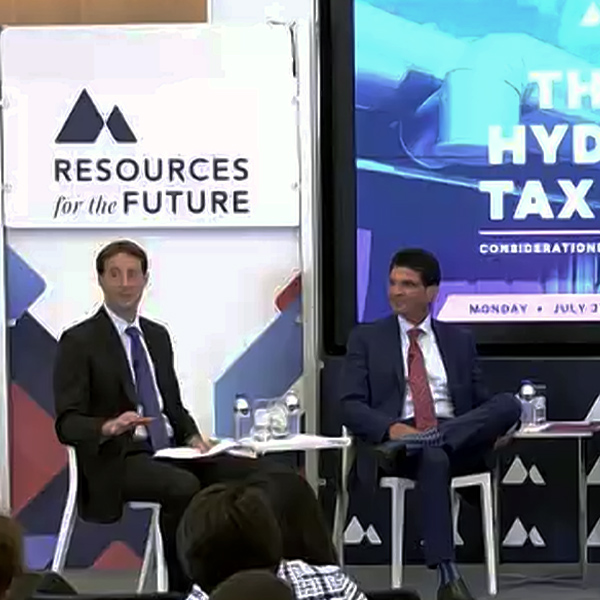
The Treasury Department must balance the need to grow the hydrogen industry with the need to ensure it is clean as it implements the 45v tax credit in the Inflation Reduction Act, experts said at a Resources for the Future event Monday.
While hydrogen production now is done with natural gas, which produces direct emissions, it can be done with electrolysis — using electricity to split the hydrogen atoms out of water. How clean that is depends on what is generating the electricity, said RFF Fellow Kevin Rennert.
Lawmakers were aware of the emissions issue and wrote in the statute that the 45v credit must take lifecycle emissions into account when it is being awarded, and how much credit projects get.
While the main strategy to cut emissions involves electrification, such as with motor vehicles and home heating, that does not work everywhere, said American Clean Power Association CEO Jason Grumet.
“There’s some big parts of our economy, both domestically and globally, that just don’t lend themselves to electrification: heavy industry, cement, steel, some heavy freight transport, aviation,” Grumet said. That’s been the missing piece, he added. “And so, here’s where green hydrogen kind of fits the bill.”
The industry doesn’t exist now. To ensure major commodities are produced cleanly, green hydrogen, or an alternative, needs to grow significantly in the coming decades. (See DOE Releases National Clean Hydrogen Strategy and Roadmap.)
Policymakers are worried that if they start putting a bunch of electrolyzers onto the grid without additional clean energy supplies, that would increase emissions overall, Grumet said.
To get around that, ACP supports requiring new electrolyzers to be supplied by new clean energy generation in their region. But the requirement to match hourly demand with renewable production would be phased in so any project that starts construction by the end of 2028 would only have to match annual demand, which is much more flexible and would allow the industry to grow, Grumet said.
To keep pace with the energy transition, about 10 million metric tons of clean hydrogen needs to be produced by 2030, and that would require 100 GW worth of electrolyzers, said Electric Hydrogen Vice President for Policy Paul Wilkins. That’s based on a utilization rate of about 60%, with hydrogen production ramping when renewable power is available and not running when it is not.
Without “temporal matching” with renewable production, the credits would go to simpler electrolyzers that can’t ramp production up and down easily and run as often as possible, helping to drive up peak demand and thus electric rates for other consumers.
“An electrolyzer that can’t ramp is more likely to be produced in China,” Wilkins said.
North America is expected to have 3 GW of hydrogen production running by next year. China will have 13 GW, dominated by less flexible production, which it can build at a third of the cost of what’s built in the West. Requiring temporal matching would ensure not only the molecules of hydrogen were clean, but also that the tax credits flowed to more technically advanced, American machinery.
“We need to make sure that we’re innovating incentivizing a flexible hydrogen production, storage and consumption system,” Wilkins said. “And the U.S. does innovation better than any other country in the world. If the U.S. incentivizes innovation, and if Treasury incentivizes innovation, we’re confident the U.S. industry is going to win. If Treasury incentivizes low tech, China does low tech at scale really well.”
The incentive in question is the IRA’s largest, totaling $450 per ton of CO2 abated when clean electricity production credits are included, and $300 per ton without them, said Rocky Mountain Institute Senior Associate Nathan Iyer. If designed well, it could help decarbonize major industries.
“It is all centered around one core question: How do you prove that the electricity that you are consuming is low carbon when you have a much dirtier grid?” Iyer said.
Using power with the grid’s average emissions would lead to hydrogen that produces about 20 kilograms of CO2 per ton, which is worse than producing with natural gas, and 30 to 60 times dirtier than electrolyzers would need to be to qualify for 45v, he added.
“As the largest credit, this will set a national precedent and could be a huge step forward if it’s durable and effective at reducing emissions in the real world,” Iyer said. “And while the structure of this credit forced this question for hydrogen first, this is not the last time that we will have this debate.”
The same subject of decarbonizing the grid while adding massive, new loads is going to be key to decarbonizing many parts of the economy, he added.



